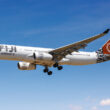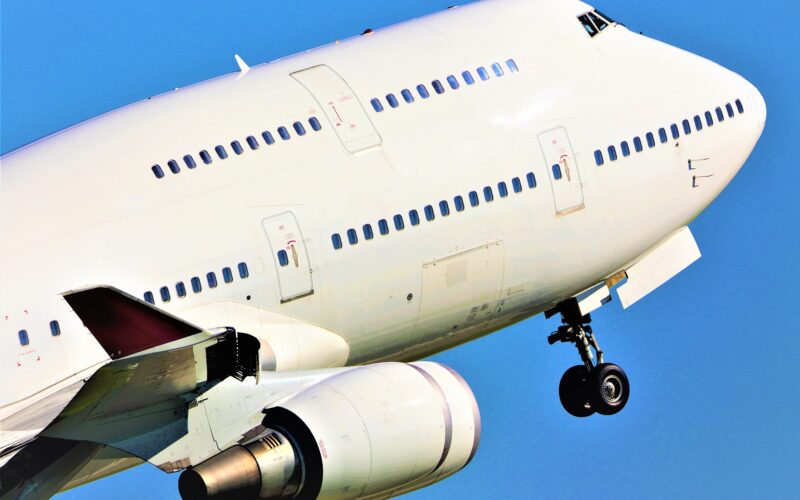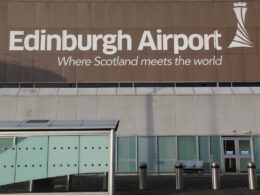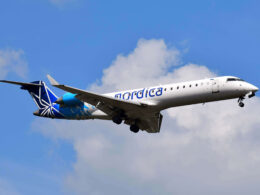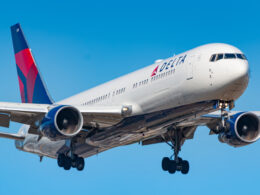Despite ongoing concerns about pandemic-related financial losses, rising inflation and cost pressures, the global airline industry is expected to finally return to profitability in 2023, according to the International Air Transport Association (IATA).
However, while some regions are expected to welcome long-awaited profits next year, others still have a lot of work to do on the path to profitability.
How will airlines end 2022?
Even though airlines faced multiple challenges including rising operating costs, labor shortages, strikes, and other disruptions across the world’s key hubs during 2022, they still managed to cut losses thanks to an increased demand for air travel.
Recent analysis by IATA suggests that passengers are taking advantage of relaxed restrictions on traveling. The IATA found that 70% of travelers in 11 global markets are traveling as much or more than they did before the pandemic.
Analysts say that, with both passengers and airlines regaining confidence in safe air travel, the global airline industry is expected to end 2022 in a better position. The IATA estimates that the airline industry net loss will stand at approximately $6.9 billion at the end of 2022 compared to $42 billion and $137.7 billion recorded in 2021 and 2020 respectively.
The industry should see an approximate 8.4% increase in passenger traffic at the end of 2022 compared to 2021, which will lead to a significant jump in passenger revenues, reaching $438 billion compared to $239 billion in 2021. According to IATA’s director general Willie Walsh, airlines will end the year at around 70% of 2019 passenger volumes.
“IATA’s June forecast anticipated that passenger traffic would reach 82.4% of pre-crisis levels in 2022, but it now appears that the industry demand recovery will reach 70.6% of pre-crisis levels. Cargo, on the other hand, was anticipated to exceed 2019 levels by 11.7%, but that is now more likely to be moderated to 98.4% of 2019 levels,” the analysis reads.
Experts note that air cargo played a key role for air carriers in cutting losses in 2022. IATA predicts that cargo-related revenues will almost double to a total of $201.4 billion compared to $100.8 billion in 2019. And thus, the overall revenues are expected to grow by 43.6% compared to 2021, reaching an estimated $727 billion by the end of 2022.
“With yield improvement in both cargo and passenger businesses, airlines will reach the cusp of profitability,” Walsh says.
Global airline industry is expected to tip into profitability
In 2023, airlines are expected to record their first profits since 2019. Air carriers are predicted to record a net profit of around $4.7 billion in 2023.
“As we look to 2023, the financial recovery will take shape with a first industry profit since 2019. That is a great achievement considering the scale of the financial and economic damage caused by government-imposed pandemic restrictions. But a $4.7 billion profit on industry revenues of $779 billion also illustrates that there is much more ground to cover to put the global industry on a solid financial footing,” according to the IATA director general.
However, the forecasted growth will remain low in comparison to an industry profit of $26.4 billion posted in 2019.
“This expected improvement comes despite growing economic uncertainties as global GDP growth slows to 1.3% (from 2.9% in 2022),” IATA explains in its report.
As for passenger flights, the demand should reach around 85.5% of 2019 levels, generating revenues of 522 billion in 2023. But this estimation takes into account the ongoing uncertainty with the zero-COVID policy in China, which continues to restrain the recovery of both domestic and international markets.
“Nonetheless, passenger numbers are expected to surpass the four billion mark for the first time since 2019, with 4.2 billion travelers expected to fly. Passenger yields, however, are expected to soften (-1.7%) as somewhat lower energy costs are passed through to the consumer, despite passenger demand growing more quickly (+21.1%) than passenger capacity (+18.0%),” the report suggests.
According to Walsh, even though the expected profits for 2023 are “razor thin”, lower oil price inflation and continuing pent-up demand should help airlines “to keep costs in check” as the strong growth trend continues.
“At the same time, with such thin margins, even an insignificant shift in any one of these variables has the potential to shift the balance into negative territory. Vigilance and flexibility will be key,” Wash explains.
Global air cargo market could face “increased pressure”
While the outlook for passenger services is largely positive, the global air cargo market could, according to the IATA, come “under increased pressure” in 2023 with revenues expected to be $149.4 billion, some $52 billion less than in 2022.
However, such a performance will still be around $48.6 billion stronger than recorded by airlines in 2019.
Considering the current economic instability, cargo volumes might decrease to 57.7 million tonnes compared to a peak of 65.6 million tonnes flown by cargo operators in 2021.
“As belly capacity grows in line with the recovery in passenger markets, yields are expected to take a significant step back,” analysts estimate.
“IATA expects a fall of 22.6% in cargo yields, mostly in the latter part of the year when the impact of inflation-cooling measures is expected to bite. To put the yield decline in context, cargo yields grew by 52.5% in 2020, 24.2% in 2021, and 7.2% in 2022. Even the sizable and expected decline leaves cargo yields well-above pre-COVID levels.”
North America will end 2022 as the leader, Europe, and the Middle East will catch up later
Based on the IATA forecast, North America will be the only region to return to profitability in 2022. But in 2023, two more regions – Europe and the Middle East – will step into profitability.
North American airlines should end 2022 with a $9.9 billion profit and will continue operating even more profitably in 2023 with an estimated result of $11.4 billion in 2023. This is because air carriers operating in the region faced less strict and shorter-lasting operational restrictions compared to other regions of the world.
Based on predictions, in 2023 North American airlines will serve more than 97% of pre-crisis demand levels with around 98.9% of pre-crisis capacity.
Passenger demand will increase by 6.4% and will outpace airlines’ capacity growth of 5.5% in 2023, according to the report.
Meanwhile, Europe faces a loss of $3.1 billion in 2022. The ongoing Russian invasion of Ukraine is responsible for restricted operational opportunities for some of the European airlines.
“Operational disruptions at some of the continent’s hubs are being resolved, but labor unrest continues at various locations,” according to the IATA.
However, European air carriers will return to profitability of around $621 million in 2023. Over the upcoming year, the region is expected to serve slightly more than 88% of pre-crisis demand levels with 89.1% of pre-crisis capacity, meaning that the expected 8.9% passenger demand growth will outpace the 6.1% capacity growth.
As with Europe, the Middle East is another region that will operate profitably in 2023 after a damaging 2022. Middle East airlines are expected to record a loss of $1.1 billion in 2022, but they will return to $268 million profit in 2023 since the passenger demand in the region is expected to rise by 23.4%, while its capacity will grow by 21.2%
Analysts say that, unlike European air carriers, the Middle East airlines have taken advantage of other carriers re-routing their flights from the war in Ukraine-impacted areas and benefitted from their extensive global networks as international travel markets re-opened.
It is anticipated that the Middle East region will serve 97.8% of pre-crisis demand levels with 94.5% of pre-crisis capacity.
Some will not see any profits in 2022, or in 2023
2023 will not bring Asia Pacific airlines the long-awaited relief. Despite the region being the largest player in air cargo services worldwide, it remains the most impacted by China’s zero-COVID policies on air travel in both domestic and international markets.
IATA predicts that Asia Pacific will record a loss of $10 billion in 2022, and its prospects for 2023 seems to be gloomy. In 2023, passenger demand growth of 59.8% in the region is expected to outpace capacity growth of 47.8%. During 2023, airlines will serve 70.8% of pre-crisis demand levels with 75.5% of pre-crisis capacity. These estimations will only help to narrow the loss to $6.6 billion in 2023.
Latin American airlines as well as carriers in Africa will not see any profits in 2022, or 2023. While the Latin American region will end 2022 with a loss of $2 billion, African airlines will post a loss of $638 million for the year.
“Latin America has shown buoyancy over the year, largely owing to the fact that many countries began lifting their COVID-19 travel restrictions since mid-year,” the report reads.
It is predicted that, in 2023, passenger demand across both regions will outpace capacity growth by 3% and 5.5% respectively. However, such an increase will not be enough to avoid losses.
“Africa is particularly exposed to macro-economic headwinds which have increased the vulnerability of several economies and rendered connectivity more complex,” according to the analysis.
The estimated loss in Latin America will stand at $795 million, while Africa will shrink its loss to $213 million in 2023.
Risks in 2023
According to the IATA, several risks could negatively affect the current 2023 outlook. One of those is the uncertainty of how rising fuel prices and inflation will change the operational environment during 2023.
Experts say that the total fuel spend for 2023 is expected to be $229 billion, not exceeding the usual rate of 30% of airline expenses despite the higher cost of jet fuel. But the overall costs will rise by 5.3% to $776 billion. And that growth is expected to be 1.8% below revenue growth.
“Cost pressures are still there from labor, skill, and capacity shortages. Infrastructure costs are also a concern,” IATA warns.
China’s approach to re-opening the country to international air traffic as well as the risk of recession to various economies are the IATA’s biggest concerns. The analysts say that if China fails to gradually ease the domestic pandemic restrictions and does not reopen the country for international traffic in the second half of 2023, such a delay would “adversely affect” the current outlook.
Walsh says: “Each passenger carried is expected to contribute on average just $1.11 to the industry’s net profit. In most parts of the world that’s far less than what is needed to buy a cup of coffee. Airlines must remain vigilant to any increases in taxes or infrastructure fees. More taxes and higher charges would be counter-productive.
“While indications are that there could be an easing of aggressive inflation-fighting interest rate hikes from early 2023, the risk of some economies falling into recession remains. Such a slowdown could affect demand for both passenger and cargo services. It could eat away at profitability in 2023.”


